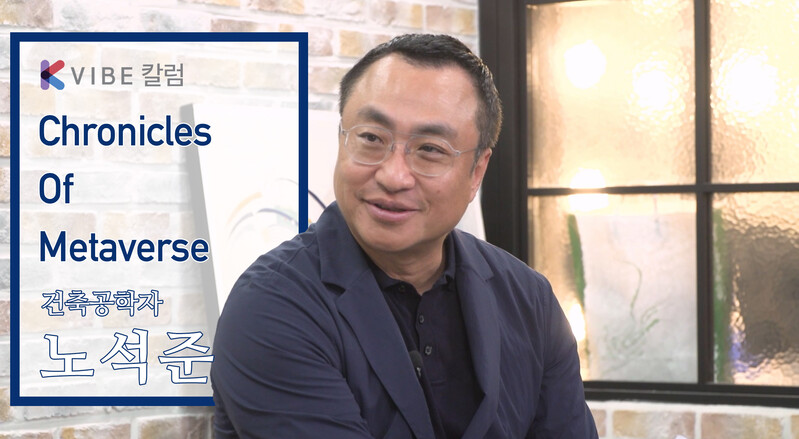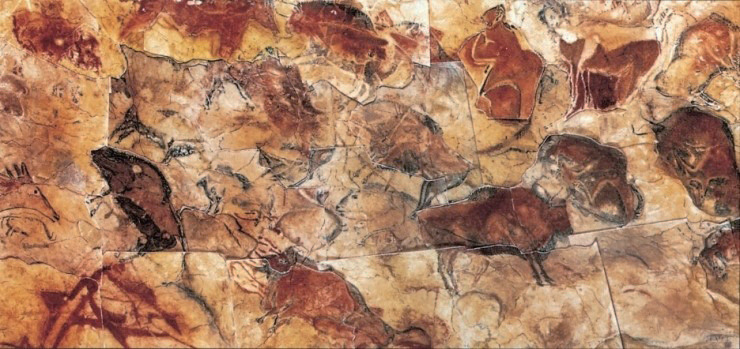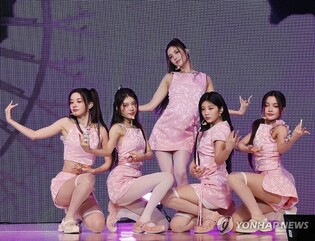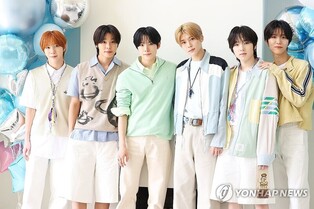*Editor’s note: K-VIBE invites experts from various K-culture sectors to share their extraordinary discovery about the Korean culture.
Chapter 2. Theory and Knowledge of Metaverse
Homo sapiens: Creating the Primal Metaverse through Fictional Realities
By Noh Seok-joon (Master K-architect engineer)

Scholars have suggested that tens of thousands of years ago, multiple human species inhabited the Earth, yet Homo sapiens is the only one that survived. What enabled this species to outlive its counterparts and drive the unprecedented progress we see today? Israeli historian Yuval Harari points to the "Cognitive Revolution" as the turning point, around 70,000 years ago, when Homo sapiens developed a unique way of thinking and communicating—one that allowed them to create complex social structures and eventually, dominate the planet.
Central to this survival and subsequent flourishing was the ability of Homo sapiens to engage in "fictional storytelling." As Harari notes in Sapiens, "The ability to speak about fictions is the most unique feature of Homo sapiens language." Unlike other species, Homo sapiens could discuss things that did not physically exist, which allowed them to create shared myths and build societies and nations. Today, this storytelling ability has evolved into the digital age, where it underpins the development of the virtual world, or metaverse.
How Did Sapiens Build Empires?
In the prehistoric era, before the rise of
civilization, Sapiens collaborated to evade predators like lions and tigers and
to hunt animals such as bison, wild horses, and deer. These experiences laid
the foundation for securing strong defense and attack capabilities, allowing
them to form social groups that hunted and lived together. However, this
cooperative living had a limitation—the maximum number of individuals that
could form a cohesive group was 150. Why was this the limit?
Yuval Harari, in his book Sapiens, identifies
"gossip" as the key reason why humans could form groups at all. Among
various human species, including Australopithecus, Homo habilis, Homo erectus,
Neanderthals, and Homo sapiens, only Homo sapiens had the linguistic skills
necessary to use gossip to build bonds within groups. Gossip, though often seen
as a negative trait, was essential for forming the complex cooperation needed
among many individuals.
Despite their advanced linguistic abilities,
Sapiens found it difficult to maintain group cohesion beyond 150 members. If
the number exceeded this, the group’s unity would weaken, leading some members
to split off and form new groups. This limitation led Harari to pose a critical
question:
"How did Sapiens overcome this decisive
limitation to create cities and nations with hundreds of thousands of
residents, and eventually build empires ruling millions?"
Harari argues that Sapiens overcame the
150-member limit and successfully unified larger groups, such as cities,
states, and even massive empires, thanks to their unique ability to create and
share "fictional stories." Skilled in language, Sapiens overcame the
limitations of gossip by crafting abstract and imaginary concepts, making these
the protagonists of their fictional narratives. These stories reinforced a
sense of unity and identity among the groups. By consistently sharing and
transmitting these fictional stories to neighbors, new members, and future
generations, Sapiens were able to unite vast numbers of strangers under a
shared collective imagination, leading to successful cooperation and
collaboration.
Moreover, as these stories spread and group
sizes increased, the fictional narratives themselves became more diverse and
sophisticated, creating a positive feedback loop that further united even more
people. By conveying and sharing abstract and imaginary concepts—such as tribal
spirit, nationhood, ethnicity, politics, philosophy, and religion—Sapiens
established a collective consciousness, enabling them to empathize with and
cooperate with countless new individuals.
Through this continuous creation of fictional
stories, humanity consistently generated new levels of virtuality. These
stories helped unite and control group members, leading to the formation of
societies and states, and driving humanity to create the advanced world we live
in today.
The Cognitive and Educational Revolution Born from Sapiens' Virtuality
How did the species known as Sapiens harness the power of "fictional stories" to achieve the remarkable progress that defines human history? Before the establishment of writing systems as we know them today, human storytelling was predominantly oral. These stories could be based on facts, or they could blend reality with imagination. Regardless of their form, oral transmission meant that stories were subject to change with each retelling, making it impossible to preserve the original version intact.
Moreover, stories were frequently distorted by the emotions, thoughts, and biases of the storytellers. For instance, a story about someone encountering a wild animal in the mountains at night could transform with each retelling—from simply being a "wild animal" to becoming a "tiger" or even a "horned monster." The reaction of fleeing in fear could escalate to "suffering severe injuries" or even "dying," as the storytellers' fears amplified the tale with each telling.
However, certain core elements, like "someone encountered a terrifying creature in the mountains," remained unchanged as the story spread. The details that sparked curiosity and imagination—such as "What exactly did the person encounter?" or "What happened next?"—were where the storytellers' emotions and imaginations took hold, leading to continuous distortion. These exaggerated and distorted stories heightened fear among listeners, strengthening group cohesion through shared anxiety. This phenomenon wasn't limited to fear; it applied to emotions like joy, sadness, regret, and anger as well. The heavy and fantastical elements of mythological and religious stories in all cultures stem from this process.
Sapiens' fictional stories also served as the ultimate tools for enhancing their cognitive abilities. To orally transmit a story, one first needed to understand it. Comprehension was necessary to pass the story on to others or to future generations. Additionally, memorizing the story was crucial in an era without writing. As Sapiens repeated these processes of storytelling, their cognitive abilities—such as comprehension and memory—naturally improved.
The storytelling process didn't stop there. As stories were transmitted, they were often recreated with added virtuality, combining the storyteller's imagination and subjective perspectives. This embellishment process accelerated with each generation, further enhancing human creativity and imagination. In this way, the method of storytelling and the repetitive distortion of stories became key educational processes that dramatically improved human cognitive abilities.
Even though real-life stories were continuously altered and distorted, this process was fundamentally important for generating virtuality. The ongoing distortion and transformation of stories through oral transmission marked the beginning of humanity's creative abilities and the birth of the first "cognitive revolution," which also served as an educational revolution.
Storytelling offered humans a vital opportunity to continually practice virtuality. In the process of modifying and distorting stories through imagination and fiction, each storyteller engaged in cognitive learning, developing the ability to create virtuality through creativity and imagination.
Approximately 70,000 years ago, the first cognitive revolution led to the birth of fictional stories, which were later completed in written or book form with the development of writing and technology. Once recorded in writing, these stories could be preserved in their original form, translated into other languages, and spread rapidly for learning and transmission. While individual interpretations could still distort the stories based on cultural, regional, or personal perspectives, these distortions were minimal compared to those that occurred during oral transmission. Consequently, instead of generating new virtuality, these written stories became integrated into lifestyles, regional characteristics, and societal structures.
The expansiveness of stories became the key to uniting vast numbers of people. Fictional stories, shared and learned by many, became important values that guided groups, societies, and nations in the form of myths, religions, cultures, and lifestyles. Stories did not remain merely in their original form. Through oral transmission, writing, and printing, fictional stories were visualized and concretized through the highest technologies of their times—whether in art, technology, philosophy, literature, or media. These virtual stories, and the virtual creations based on them, have continuously formed the collective consciousness that unites countless individuals.
At the same time, humans did not hesitate to wage wars to expand their virtuality. During warfare, cognitive abilities developed rapidly. When groups with differing values clashed, they often forced each other to adopt their stories and follow their values, leading to conflict. When such conflicts escalated, wars broke out. In these confrontational situations, each group utilized their intellectual abilities to the fullest for survival and dominance, resulting in a rapid enhancement of human intellectual and cognitive capacities.
Primitive Humans Create Their Own Virtuality
 |
| ▲ Altamira Cave Paintings |
The fictitious storytelling of Homo sapiens represented the first acts of virtual reality in human society. Such virtual acts consistently occurred even in primitive societies based on hunting. The Altamira Cave in Spain preserves cave paintings of bison that appear to come alive. These paintings are estimated to have been created between 17,000 and 15,000 years ago during the Upper Paleolithic period. The bison depicted in the paintings exhibit various movements, and the artistic techniques employed are astonishingly detailed for the works of prehistoric humans. Using colors such as red, purple, and black, the bison are rendered in a remarkably realistic manner, with the uneven surfaces of the rocks enhancing the three-dimensional representation of the animals' bodies.
A closer examination of the cave paintings reveals markings that appear to be made by stone tools or soot from fire. Scholars suggest that these marks indicate the primitive people's virtual hunting attempts directed at the animals portrayed in the murals. In Ernst Gombrich's "The Story of Art," there is a tale of a European painter who painted cattle in an African village and attempted to take the painting away, prompting the locals to protest, saying, "If you take the cattle away, how will we live?" When connected to the Altamira cave paintings, this story implies that prehistoric people drew bison deep within the cave as a virtual act of hunting, gaining confidence in their hunting skills and wishing for successful hunts.
This can be interpreted not merely as a magical act but as humanity's first virtual game. Primitive humans established a virtual space inside the cave, simulating the hunting of the painted prey on the walls. In this sense, it can be seen as the precursor to modern gaming and the origin of a perfect primitive world of virtuality, akin to the metaverse.
Another notable example from the Upper Paleolithic era is the Lascaux cave paintings in France. The dynamic representations of bison, wild horses, deer, and goats in these murals also include images of animals that appear to be wounded from hunting. This suggests that the paintings were used to enhance people's confidence before actual hunts.
A distinctive feature of the Lascaux cave paintings is their abstract depiction of bison, unlike the more realistic portrayals in the Altamira cave. It is presumed that the abstraction conferred a sense of virtuality to the animals, strengthening the bonds among hunters.
 |
| ▲ Lascaux Cave Paintings |
Thus, from prehistoric times, humanity has utilized cave paintings to create their own sense of virtuality, amplifying the battle spirit of hunting and fostering group cohesion. This can also be regarded as the archetype of primitive virtual reality.
(C) Yonhap News Agency. All Rights Reserved


































